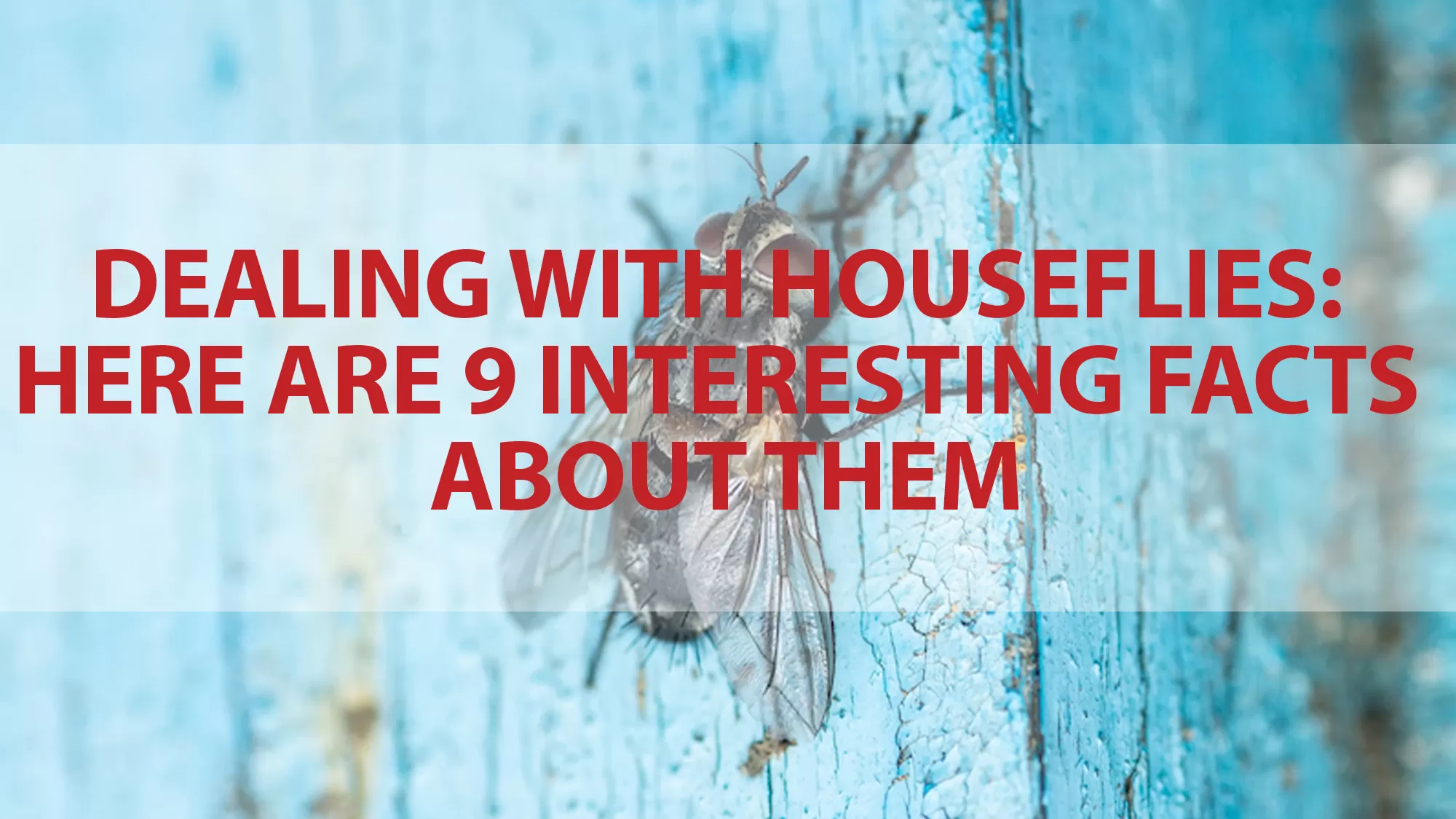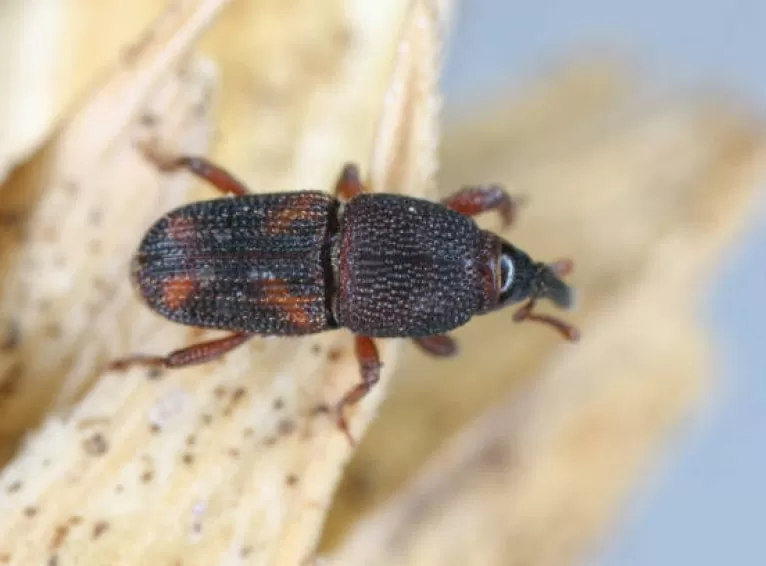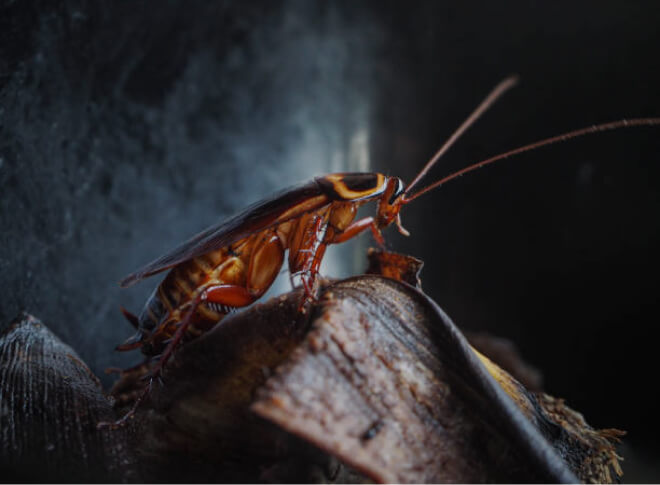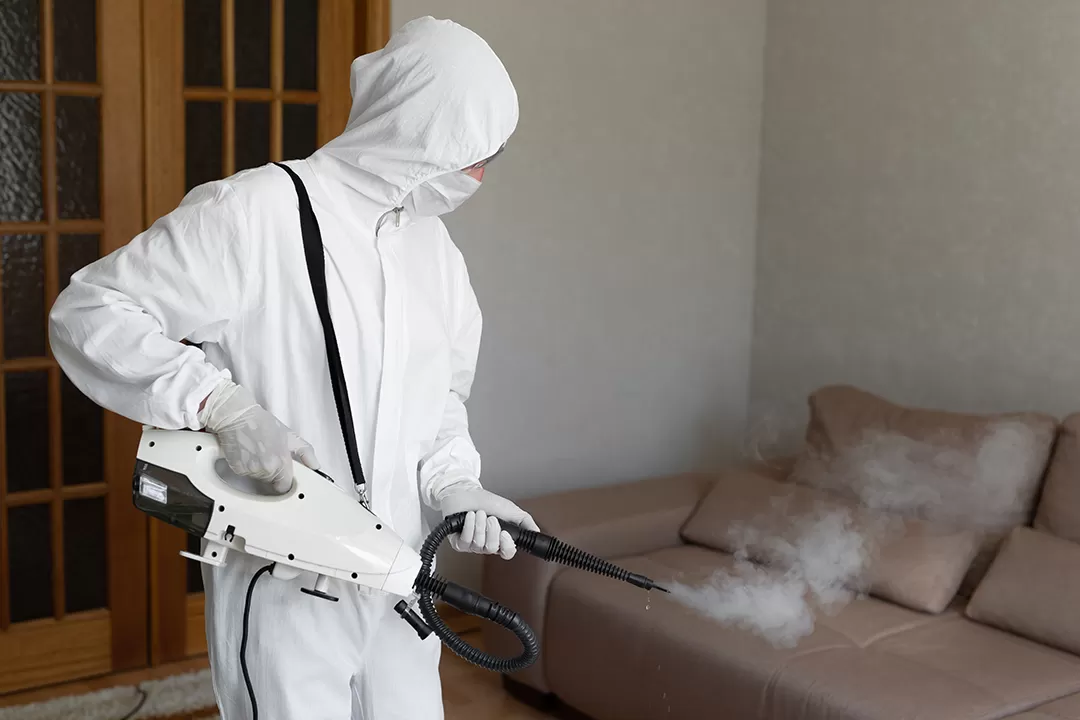Troubled by swarms of flies taking over your home? You’re not alone. Houseflies are a common intruder in most Singapore households. Their sheer presence is infuriating, but that is not the only concerning issue.
These harmless-looking insects can carry over 100 harmful pathogens. Yes! From salmonella to tuberculosis to amoebic dysentery – flies can wreak havoc on your body. If you are surprised you didn’t know this, there’s more for you!
Even though flies are a pest we encounter daily, we know very little about them. Want to learn more about these pests that flutter around your dining and kitchen areas? Here are nine interesting facts about this insect species:
Houseflies Feed on Liquid Only
Did you know houseflies can only feed on liquid substances? This is because their mouthparts, called the proboscis, are sponge-like, so they can only take in substances they can soak up.
Even though flies do not have any chewing mouthparts to eat solid substances, you must keep your food away from the reach of these disease-carrying pests. For, they can vomit on solid food and liquefy it to prepare it for consumption. The vomit contains digestive enzymes which predigest the food for the housefly.
Flies Taste Food With Their Feet
How do houseflies decide if they want to feast on something? First, they check whether it is appetising or not with their feet. Similar to butterflies, houseflies can taste with their feet as they have taste receptors on their feet and lower legs.
From organic substances in the garbage to animal faeces to your dinner, when they land on an appetising meal, flies first use their feet to give it a good taste. Note that flies like to wander around and sample the food for a long time before feeding on it.
Houseflies Defecate Often
As you already know, houseflies rely on a liquid-based diet. This means digestion is rather straightforward for these pests. Hence, food moves relatively quickly through a fly’s digestive tract, which results in frequent defecations. Not just that, they poop wherever, even where they eat.
Disgusting but true! Almost every time a fly lands on food, it poops. So, in addition to spitting and vomiting on your food, flies are also defecating all over it. Keep this in mind next time you leave your food uncovered.
Flies Lay Eggs In Unconventional Places
Houseflies give birth in unhygienic places. They will lay eggs in rotten meat, animal faeces, sewage, and several other nasty places. Even though it may sound disgusting to you, there is a reasonable explanation behind this breeding habit.
As you already know, houseflies feed on filthy and rotten substances. This is why they purposely lay eggs where their larvae will get access to food immediately after the eggs hatch. No wonder they are also commonly called filth flies.
Houseflies Can See Behind Them
Ever tried to swat a fly? If you did, you know how difficult it is. No matter how hard you try, houseflies can escape. This is because they can see behind them. Not just that, but they can see all around them!
Yes, houseflies have an intricate 360-degree field of view. Their eyes do not move, but their superior vision allows them to see from all angles and avoid danger during navigation. Plus, flies have up to 6,000 mini lenses in each eye, which help them see attackers in slow motion.
Flies Have a Short Life
Houseflies do not live for too long. They only have a lifespan of 30 days. However, they can accomplish a lot of things within this time. A housefly can lay 75 to 150 eggs at a time. Each fly can lay a total of up to 500 eggs. So, despite their short lifespan, houseflies can quickly become an infestation.
Houseflies Can Defy Gravity
Houseflies can perform the gravity-defying feat of walking upside down. Thanks to the anatomy of flies, they can climb and walk on any surface. Vertical, horizontal, or upside down – a housefly can walk in any direction.
The feet of houseflies are lined with fat foot pads. The foot pads have tiny hairs that release sticky substances made of oils and sugars. This offers excellent grip and allows flies to scale any surface.
Houseflies Spread Diseases
You should know by now that houseflies are not as harmless as you had thought. In fact, they carry a surfeit of disease-causing agents.
When a housefly lands on something unhygienic, like dog poop, and inspects it with its feet, it carries germs from this sample to the next thing it sits on. Unfortunately, the same fly can land on your food next. This contamination can lead to the transmission of hundreds of diseases, including cholera, giardiasis, typhoid, dysentery, leprosy, salmonella, and conjunctivitis.
Houseflies are Slow Fliers
Don’t let the buzzing sound of flies fool you. Houseflies are generally quite slow. However, their rapid wing movements generate a buzzing sound. They move their wings up to 1,000 times in a minute but cannot cover long distances. On average, a housefly maintains a speed of 4.5 miles per hour.
The total distance a fly will cover often depends on environmental conditions too. For example, in urban areas, flies rarely have to travel long distances in search of food. However, houseflies may travel long distances in rural areas where garbage piles are not so easily available.
Conclusion
Now, you already know so much more about your unwelcome visitors. But, as fascinating as these facts about houseflies are, you should now be more alert. There are plenty of reasons you should try to get rid of these pests from your home.
These unhygienic pests will feast on your food and defecate on it at the same time. They also carry germs from other surfaces they land on before they settle on your food. In conclusion, houseflies spread a plethora of diseases, and you should aim to have a fly-free home.







